Prambanan "The Largest Hindu Temple" between history and myth.
Hi,.. This time I will tell you a little about the history and sights of Prambanan Temple.
Prambanan temple or Temple of Roro Jonggrang is the largest Hindu temple compound in Indonesia which was built in the 9th century . This temple is dedicated to Trimurti, the three main Hindu deities namely Brahma , Vishnu , and Shiva . Based on the original name of śivagŗha this temple complex is the Siwagrha (Sanskrit meaning ' House of Shiva '), and indeed in the garbagriha (main hall) of the temple is the abode of Shiva Mahadeva's statue as high as three meters which shows that in this temple Lord Shiva preferred.
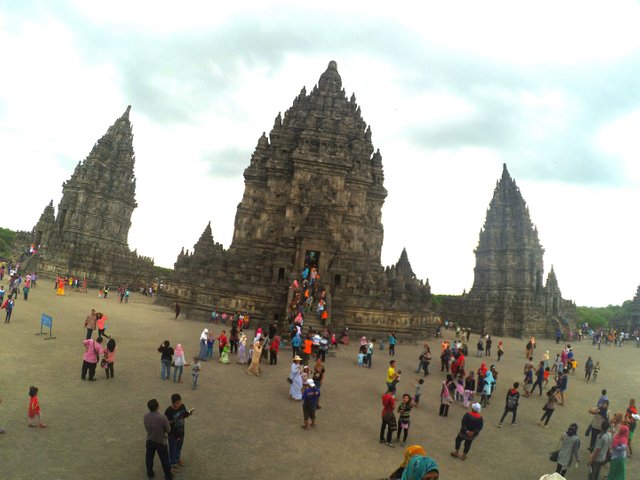
The temple complex is located on Prambanan sub-district, sub-district of Sleman and Prambanan, Klaten, 17 kilometers northeast of Yogyakarta, Indonesia, 50 kilometres southwest of Surakarta and 120 kilometres south of Semarang, Central Java, Indonesia. Exactly on the border between Central Java and Yogyakarta. It is unique, the Prambanan Temple is located in the Bokoharjo village administration, Prambanan, Sleman Regency, while the entrance of the Prambanan temple complex located on the territory of administrative village Tlogo, Prambanan, Klaten.
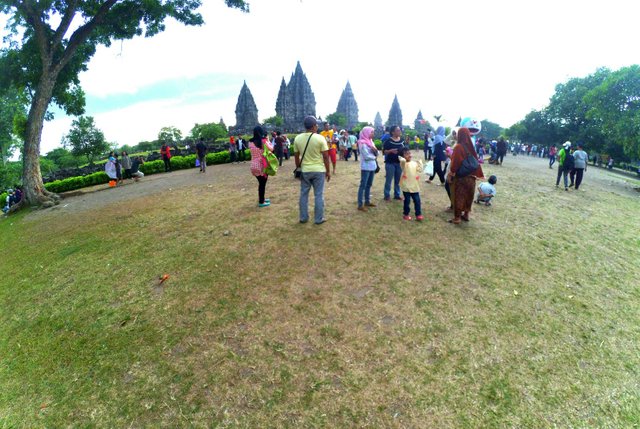
This temple is including a UNESCO World Heritage site, the largest Hindu temple in Indonesia, as well as one of the most beautiful temples in Southeast Asia. The architecture of the building is tall and slender shaped in accordance with Hindu architecture in General with Shiva temple as the main temple has reached a height of 47 metres tall in the middle of a complex cluster of temples, as one of Southeast Asia's grandest Temple, Prambanan Temple becomes the attraction of tourists visit from all over the world.
According to śivagŗha, this temple was built around in the year 850 by Rakai Pikatan, and continue to be developed and expanded by Balitung Maha Sambu, during the Medang Kingdom of Mataram.
History
Prambanan is the largest Hindu temple and grandest ever constructed in ancient Java Kingdom was Hindu temples development started by Rakai Pikatan as rival Buddhist temple Borobudur and candi also located not far from Prambanan. Some historians have long suspected that the construction of the great Hindu temple is to mark the return of a family imprisoned by Sanjaya over Java, this related theory of twins of different competing beliefs, that is the House of Sanjaya Hindu and Buddhist sailendras. Certainly, with the building of this temple marks that Hinduism flow Shaivas back got the support of the Royal family, having previously sailendras tend to be more supportive of Mahayana Buddhism. This marked that Medang Kingdom switched the focus of support keagamaanya, of Mahayana Buddhism to worship of Shiva.
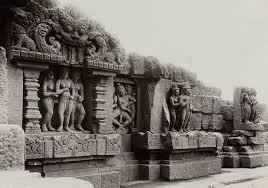
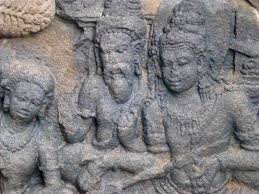
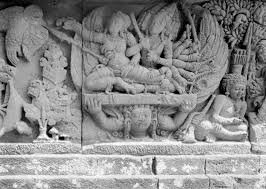
The building was first built around the year 850 Ad by Rakai Pikatan and continuously enhanced and expanded by the King and the King Balitung Maha Lokapala Sambu. On the basis of śivagŗha, 856 M dated this sacred building was built to honour Lord Shiva, and the construction of the Temple of Siwagrha ongoing, conducted public works also changes the layout of the water to move the flow of the River near this temple. The River in question is the Opak River which flows from North to South along the Western side of the complex of Prambanan Temple. Historians suspect that the original flow of the river is the curved turn eastward, and is considered too close to the Temple so that the erosion of the river can be dangerous to the construction of the temple. Project layout of water is done by creating a new river sodetan cut the curved River with a North-South axis along the west wall outside the temple complex. The original river flow then hoarded to provide land for the construction of wider rows of perwara (Temple guard or temples).
Some archaeologists argue that the statue of Shiva in the garbhagriha (the main hall) in the Shiva temple, the main temple is a statue of him as the embodiment of King Balitung, as posthumous nagarakertagama statue he. [6]
The complex of the building continued periodically enhanced by the Kings of Mataram, as Phoebe King Daksha and Tulodong, and expanded by building hundreds of additional temples around the main temple. Because of the grandeur of this temple, Prambanan Temple serves as the great Temple of Mataram Kingdom, venue for important Royal ceremonies. During its height, historians suspect that hundreds of Brahmin and his disciples gathered Ministers and inhabit the outer Court of the temple to learn Vedas and perform various rituals and ceremonies of Hinduism. While the center of Mataram Kingdom or Royal family allegedly located somewhere near Prambanan plain Kewu.
Around the year 930, the capital was moved to East Java by Mpu Sindok, who founded the House of Isyana. The cause of this power Center removals are not known with certainty. However, it is very likely caused by the eruption of Mount Merapi, a towering great around 20 kilometres north of Prambanan Temple. Other possible causes are the wars and power struggles. After the transfer of the capital, the Prambanan Temple began, abandoned and not well maintained, so slowly it begins to break down and collapse.
The building of this temple is allegedly completely collapsed due to earthquakes are excellent in the 16th century. Although no longer a religious center and a Hindu worship, the temple is still recognized and known of its existence by the citizens who inhabit the villages around. Temples and statues of Durga in the main building of this temple inspired tales of the people of Java i.e. legend Rara Jonggrang. After the split the Sultanate of Mataram in the year 1755, the ruins of temples and the Opak River nearby the sign delimiter between the Sultanate of Yogyakarta and Surakarta (Solo)
The rediscovery
Local residents around the Temple in Java already know the existence of this temple. But they don't know the real historical background, who is the King and the Kingdom what has built the monument. As a result of the local people's imagination, creating a local fairy tale to explain the origin of the existence of this temple; fantastic story tinged with the King about the Giants, thousands of temples built by the spirits of Jinn and dedemit only within one night, as well as a beautiful princess who was cursed into a statue. The legend about the Prambanan Temple known as the story of Rara Jonggrang.
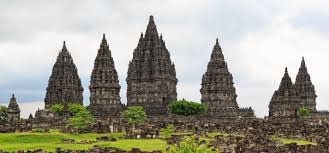
In the year 1733, Temple was discovered by CA. Lons a Netherlands-born. This temple attracts the world's attention when the British occupation on top of Java. When it's Colin Mackenzie, a subordinate surveyor Sir Thomas Stamford Raffles, find this temple. Although Sir Thomas then ordered a further investigation, the ruins of this temple remained abandoned until the decades. No serious excavations were performed throughout the 1880 's that unfortunately even fertilize stone carving and looting practices. Later in the year 1855 Jan Willem IJzerman began to clean up and move some of the rocks and soil of the compartments. A few moments later a massive demolition Isaäc Groneman do and the Temple stones stacked haphazardly along the Opak River. Statues and Temple reliefs were taken by the citizens of the Netherlands and made the garden ornaments, while the indigenous peoples using Stone Temple for building materials and the Foundation of the House.
Reconstruction
Restoration started in 1918, but the real serious efforts began in the 1930s. In 1902-1903, Theodoor van Erp maintain a section that is prone to collapse. In 1918-1926, followed by the Department of Archaeology (Oudheidkundige Dienst) under P.J. Perquin's House in a more systematic way the archaeological rules accordingly. As it known his predecessors doing the moving and demolition of thousands of rocks in vain without thinking of the existence of a restoration effort back. In 1926, De Haan was continued until his death in 1930. In 1931 was replaced by IR. van Romondt V.R. until in 1942 and then handed over the leadership of the renovation to the Indonesian and it continued until 1993
Continuous renovation efforts done even up to now. Restoration of the main temple Shiva temple complex was completed in 1953 and was inaugurated by the first President of the Republic of Indonesia Sukarno. Many parts of the renovated Temple, using the new stone, because many of the original stones were stolen or reused elsewhere. A temple will only be renovated if at least 75% of the original stones are still there. Therefore, many small temples that are not rebuilt and only its foundations seemed only.
Now, this temple was included in the world heritage site protected by UNESCO, UNESCO granted this status in 1991. Now, some parts of the Middle Temple was renovated to repair damage caused by the earthquake in Yogyakarta in 2006. This earthquake had damaged a number of buildings and statues
Have you visited the Prambanan Temple? :)
Oh I still have stories of time travel vacation including to Plaosan Temple, Sewu Temple, and the Borobudur Temple
So follow , Vote and I will be writing interesting articles next.
Thank you ^_^